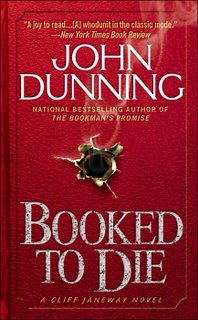Before Karen Armstrong became an authority, both learned and accessible, on the religions of the world, she spent seven years in a convent. Her first memoir,
Through the Narrow Gate, recounted those seven years. This book takes the reader beyond those years. through a period of intense sufferings and trials, and to the point where she discovers her true vocation.
The first part of this book recounts the end of her time in the convent. The brutal and, sometimes, absurd practices of the nuns numbed her mind and undermined her judgement. Ordered to practice sewing by a superior, she was punished for telling the older nun that the machine had no needle. ("You will go to that machine...and work on it every day, needle or no needle, until I give you permission to stop.") When she developed fainting attacks, complete with auras, she was told that she was looking for attention and sent to bed in disgrace. She lost her religious faith and faith in her academic abilities at the same time that her conscious mind became unreliable.
When she left the convent, she was emotionally exhausted and physically ill. Although she never thought that the fainting spells and terrifying visions were religious, she did believe what her doctors told her: they were "anxiety states" that could be treated by psychotherapy. (One doctor's words: "As long as you keep producing these 'interesting' psychic states, you are postponing the moment when you have to accept the unwelcome fact that when push comes to shove, you're not that interesting.")Her initial experiences in the outside world were unsatisfying and frightening. She tried to hide her lack of worldly skills with "a hard, intellectual manner that, [I] thought, provided me with some protection." The spells grew much worse as she began to find herself in places or situations but had no recollection of how she had gotten there.
Help came on a strange path: a job as a babysitter for a bright young boy with autism and epilepsy. Although her Oxford thesis had been rejected, although she began to relinquish hope for a normal life, and although she attempted suicide, she received a gift - a strange gift, but a gift, nonetheless. She fainted in a subway station and was taken to a hospital, where she was diagnosed with temporal lobe epilepsy. No longer were her fainting spells, hallucinations, or unremembered activities a sign of emotional instability: they were physical symptoms of a brain insult, and they could be treated like any other physical illness.
"I could have been as emotionally stolid as a sloth and it would have made no difference," she writes. "For many people, a diagnosis of epilepsy must be unwelcome news, but for me it was an occasion of pure happiness."
As she recovered from the strain of years of needless suffering, she began to be interested in religion again. Commissioned to write and host television pieces about religion, she began to investigate and re-think all she had been taught. Her research began as an academic exercise, but led her from one surprise to another.
Historical scholarship about the New Testament led her to realize that not even Paul had considered Jesus divine: "... even he would have been dismayed by some of the theological conclusions that were later drawn from his letters." Her research expanded to other Abrahamic faiths, and, later, to Eastern religions.
As for Judaism :"From my earliest years, I had been taught that Judaism had become an empty faith: wedded to external observances and with no spiritual dimension... [Jews] could no longer understand the spirit that had originally inspired these now soulless commandments."
A Jewish advisor, Hyam Maccoby, led her to understanding that Christianity (especially the Catholocism she knew best) did not have the same structure or expectations as other religions. "Theology is just not important in Judaism, or in any other religion, really. There's no orthodoxy as you have it in the Catholic Church. No complicated creeds to which everybody must subscribe. No infallible pronouncements by a pope. Within reason, you can believe what you like." Instead, he said, Jews have "orthopraxy": "right practice rather than right belief. That's all. ... It's just poetry, really, ways of talking about the inexpressible. We Jews don't bother much about what we believe. We just
do it instead."
Her research and understanding of Islam ("surrender") led her to realize "we seemed to find it difficult to regard Muslim faith and civilization with fairness and objectivity. The stereotypical view of Islam, first developed at the time of the Crusades, was in some profound way essential to our Western identity.... Westerners had
needed to hate Islam; in the fantasies they created, it became everything that they hoped that they were not, and was made to epitomize everything that they feared that they were."
Ultimately, Armstrong developed her own philosophy of religion, including her conclusion about the religious ecstasy that can be found in stepping outside of one's own ego, and developing a compassionate nature that is brought to bear in all of one's dealings with the world.
Armstrong continues to research and write about religion in a way that causes this "spiritual agnostic" understand and admire its achievements even while its abuses have changed the world - especially the modern world.



 Mary Cassatt is one of my guiding angels. Her paintings of women writing letters, drinking tea, reading, and doing needlework illuminate a life I often imagine for myself - a life surrounded by quiet beauty and the leisure to appreciate it.
Mary Cassatt is one of my guiding angels. Her paintings of women writing letters, drinking tea, reading, and doing needlework illuminate a life I often imagine for myself - a life surrounded by quiet beauty and the leisure to appreciate it.